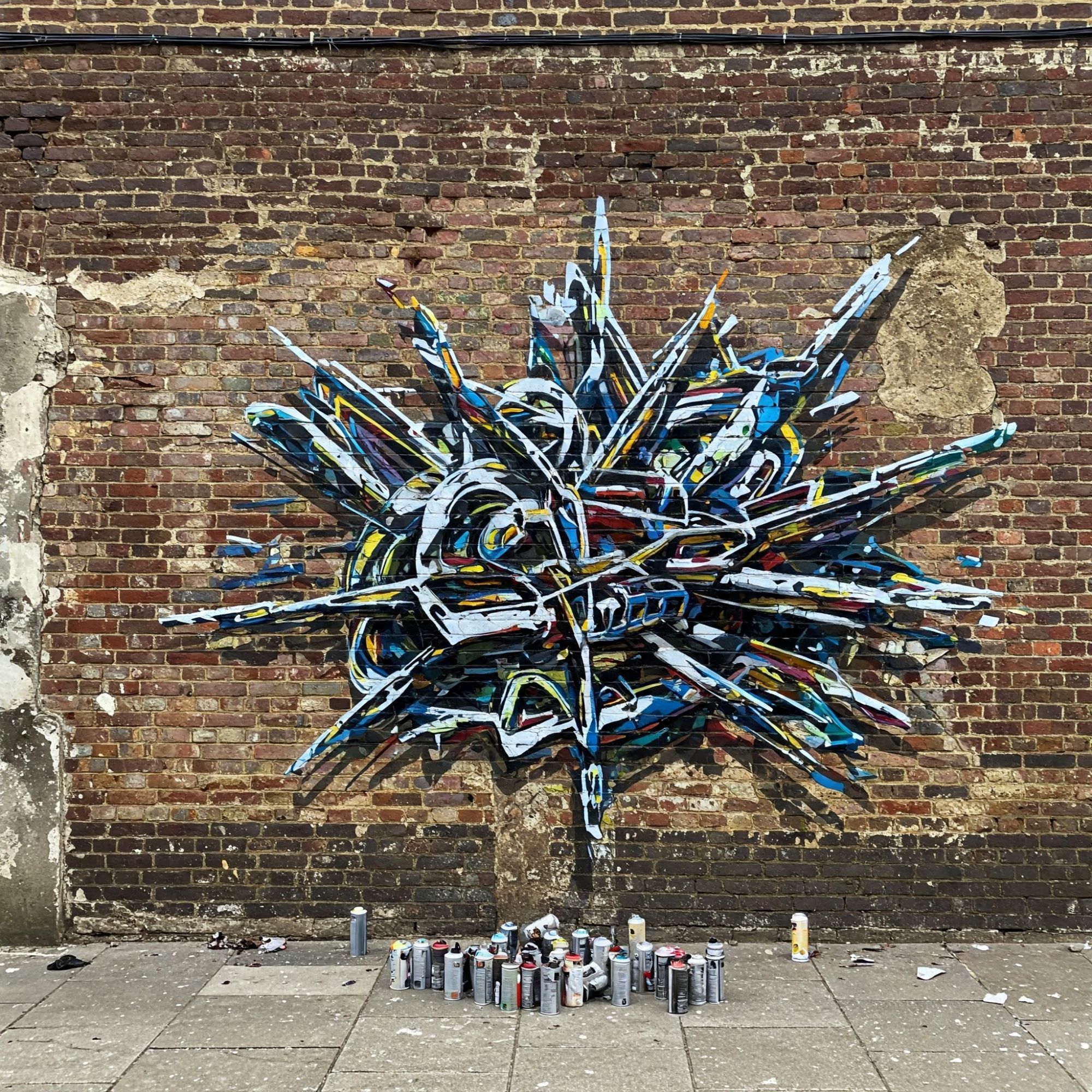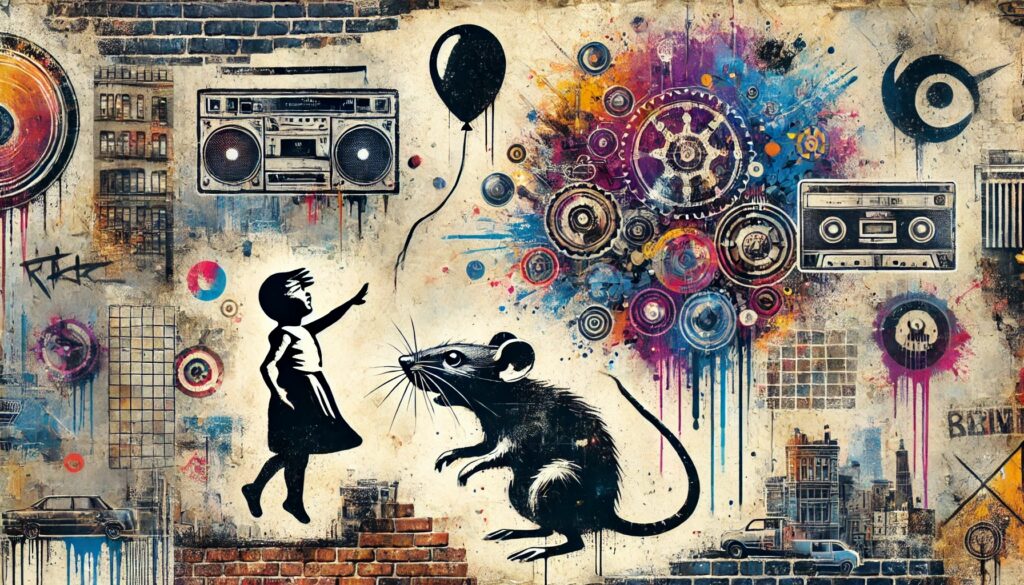Welcome to the ultimate guide to modern street art styles, where urban walls become living canvases that pulse with creativity, social commentary, and artistic rebellion.
Key Points Summary:
- Street art is a powerful form of urban expression that blends creativity with social commentary.
- Techniques range from traditional graffiti to cutting-edge digital projections and interactive installations.
- Modern street artists use their work for activism, storytelling, and reclaiming public spaces.
- The institutional acceptance of street art sparks debate over its authenticity and rebellious roots.
- Emerging technologies like AI, AR, and drone-assisted painting are shaping the future of street art. This comprehensive exploration delves into how street artists have revolutionized public spaces, transforming mundane cityscapes into dynamic galleries that challenge, inspire, and provoke thought through innovative artistic techniques and powerful visual narratives.
Street art has emerged as a profound form of urban expression, transcending traditional artistic boundaries and giving voice to communities through visual storytelling. With the advent of digital and interactive media, modern street artists are expanding their creative toolkit, using augmented reality, projection mapping, and interactive installations to engage audiences in unprecedented ways. From the gritty subway cars of 1970s New York to today’s sophisticated global installations, modern street art styles represent a complex dialogue between artists, urban environments, and social consciousness.
The Origins of Urban Artistic Expression
| Technique | Description | Notable Artists |
|---|---|---|
| Stencil Art | Using pre-cut templates for precise designs | Banksy, Blek le Rat |
| Wheatpasting | Applying printed artworks with paste | JR |
| Projection Art | Digital imagery projected onto buildings | Refik Anadol |
| 3D Installations | Sculptural street art that engages viewers | Bordalo II |
The roots of modern street art styles can be traced back to the underground movements of graffiti culture. Pioneering artists like Jean-Michel Basquiat transformed what was once considered vandalism into a legitimate form of artistic communication. These early practitioners understood that city walls could be more than mere architectural surfaces—they could be powerful platforms for cultural dialogue
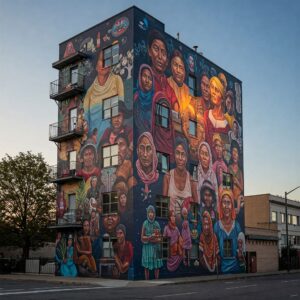
.
“Street art is not about beauty; it’s about message, context, and challenging the status quo.”
Anonymous Street Artist
“Art should comfort the disturbed and disturb the comfortable.”
Cesar Cruz
Diverse Techniques in Modern Street Art Styles
Modern street art has evolved far beyond simple spray-painted tags. Contemporary artists employ a remarkable range of techniques that blur the lines between traditional art forms and urban intervention.
Stencil Art: Precision, Speed, and Social Commentary
Stencil art, made famous by artists like Banksy and Blek le Rat, involves cutting intricate designs into cardboard or plastic sheets before spray-painting over them. This technique allows for rapid application, making it ideal for artists working in high-risk environments where they must avoid detection.
Beyond its practicality, stencil art is renowned for its strong social messages. Banksy’s iconic Balloon Girl, often interpreted as a symbol of hope and loss, became so culturally significant that it was even used in political campaigns. The simplicity of stencil art belies its emotional and political depth—each image, carefully crafted, is a silent yet potent act of resistance.
Wheatpasting: The Power of Temporary Art

Wheatpasting involves affixing printed or painted paper artworks onto walls using a simple flour-and-water paste. With the rise of social media, this technique has gained even greater influence, allowing images to spread virally and reach audiences far beyond their physical locations. This method is favored by artists who want to spread messages quickly and widely, often in protest movements.
JR’s massive photographic installations, which appear on the facades of buildings, bridges, and even trains, demonstrate how wheatpasting can turn an ordinary urban space into a striking visual statement. Because wheatpasted posters are easily removable, this technique emphasizes the transient nature of street art—its impermanence mirroring the fleeting moments of urban life.
Projection Art: Expanding the Canvas Beyond Walls
Digital projection mapping is revolutionizing street art by transforming entire buildings into dynamic, animated works of art. Unlike traditional graffiti, projection art does not physically alter surfaces, making it a legal and versatile alternative for artists operating in highly regulated spaces.
One notable example is the work of Turkish artist Refik Anadol, who uses real-time data projections to create ever-changing visuals on cityscapes. These digital murals blend technology with art, proving that the definition of street art is expanding beyond paint and stencils.
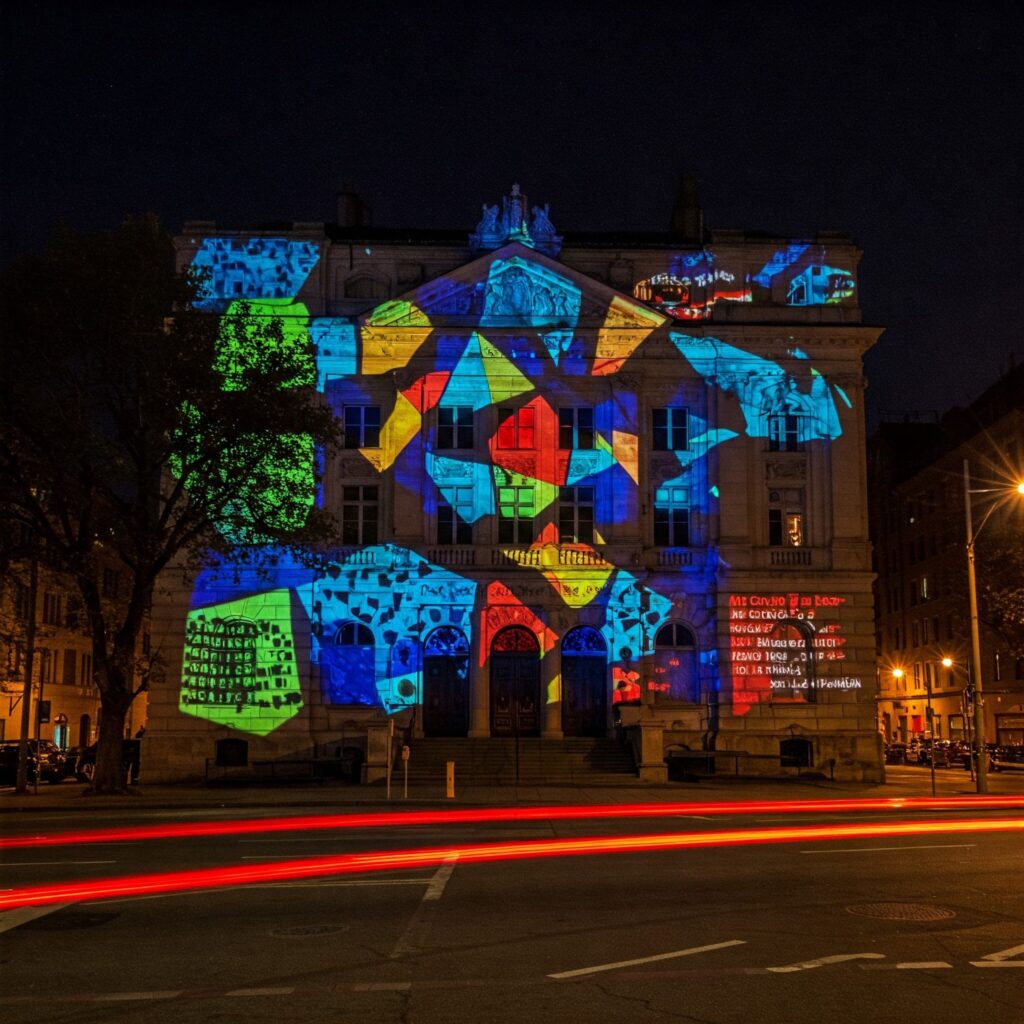
3D Installations: Sculpting the City
Moving beyond two-dimensional expression, 3D installations introduce sculptural elements into the street art landscape. These works often encourage viewer interaction, transforming static urban spaces into immersive experiences. Whether it’s climbable structures, kinetic sculptures, or installations that change based on environmental factors, 3D street art invites the public to engage with art in new and unexpected ways. These works often interact with their environment in playful, thought-provoking ways.
Portuguese artist Bordalo II, for instance, repurposes discarded materials to create massive animal sculptures that comment on environmental degradation. His work transforms urban waste into powerful visual metaphors, demonstrating how street art can be both aesthetically compelling and socially conscious.
Social and Political Dimensions
Modern street art is far more than an aesthetic enhancement of urban spaces; it is a critical force in social activism, rebellion, and cultural commentary. Throughout history, marginalized communities have used public art to reclaim their voices, challenging oppressive systems and exposing societal injustices.
For example, during the Arab Spring, artists in Egypt painted murals that depicted government violence and the resilience of protestors. Similarly, in Hong Kong, pro-democracy activists used street art to communicate their resistance, with striking imagery of umbrellas—symbolizing the 2014 Umbrella Movement—appearing across the city. In the United States, the Black Lives Matter movement saw large-scale murals covering streets in major cities, visually asserting demands for racial justice.
Street artists often become cultural historians, embedding resistance, identity, and activism into the fabric of their cities. What was once seen as simple graffiti has evolved into a sophisticated means of public storytelling, providing a voice to those who may otherwise remain unheard.
Institutional Recognition and Transformation
What was once considered vandalism has now gained significant institutional recognition. Museums, city governments, and cultural organizations increasingly commission street artists, acknowledging their profound impact on urban aesthetics and social discourse.
However, this institutional acceptance presents a paradox: can street art maintain its rebellious, countercultural essence when it is embraced by mainstream institutions? Some artists, such as those in the anarchist street art movement, reject institutional involvement entirely, viewing any form of commercialization or museum inclusion as a betrayal of the medium’s raw, unsanctioned spirit. They argue that true street art must remain illegal and uncurated, existing outside the boundaries of the art world to preserve its authenticity.?
Some artists worry about the commercialization of street art, fearing that corporate collaborations dilute its raw, subversive energy. Shepard Fairey, creator of the OBEY campaign, has navigated this fine line, using his art for both activism and brand collaborations. While some purists argue that working with commercial entities undermines street art’s authenticity, others see it as a way to sustain the movement while reaching wider audiences.
Technical Innovations and Tools
Contemporary street artists leverage an impressive array of technologies and tools. From advanced spray paint systems to drone-assisted painting techniques, these innovations allow for unprecedented creativity and precision.
Emerging Technologies in Street Art
Augmented reality applications, 3D printing, and AI-assisted design are pushing the boundaries of what street art can be. Artists are no longer confined to physical surfaces but can create immersive, interactive experiences that extend beyond traditional artistic mediums.
Global Influencers and Pioneers
Several artists have been instrumental in defining modern street art styles:
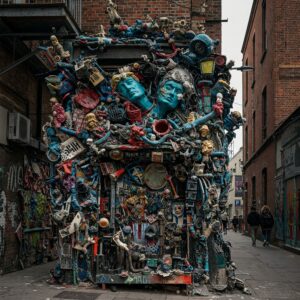
- Banksy (United Kingdom): Known for anonymity and sharp political satire
- Shepard Fairey (United States): Creator of the iconic “OBEY” campaign
- JR (France): Large-scale photographic interventions that challenge perception
- Os Gemeos (Brazil): Bringing vibrant cultural narratives to urban landscapes
The Future of Street Art
As urban spaces continue to evolve, so too will street art styles. Emerging technologies, such as AI-generated art, may further redefine the landscape, allowing for adaptive murals that change over time, interactive pieces that respond to audience input, and even algorithmically curated public installations that blend human creativity with machine learning. We can anticipate more integration of technology, increased global collaboration, and a continued focus on using art as a tool for social transformation.
Explore More on ProminentPainting.com
Note: Street art practices vary by location. Always respect local regulations and property rights.

